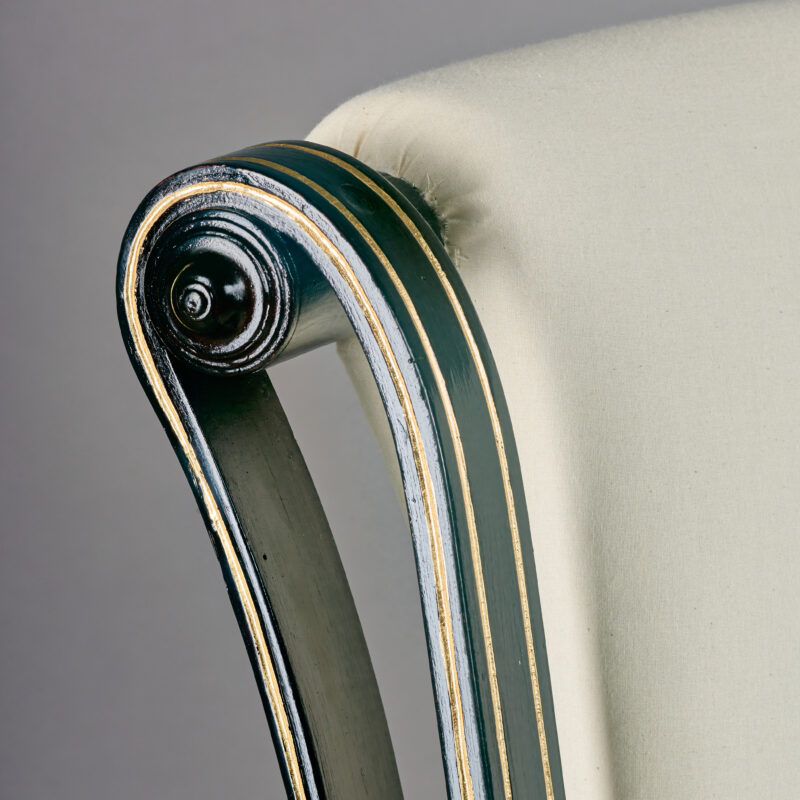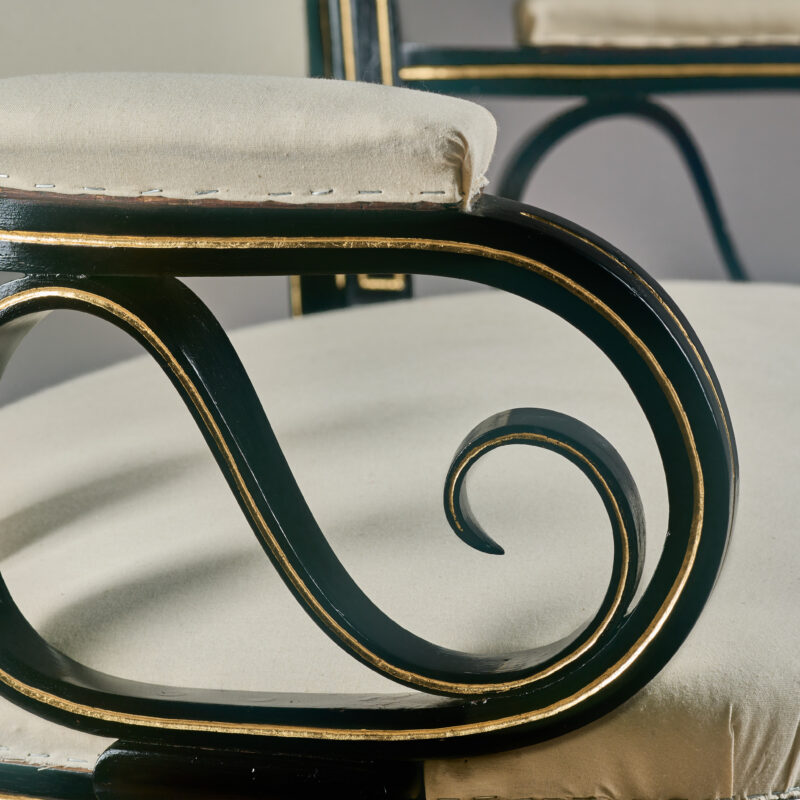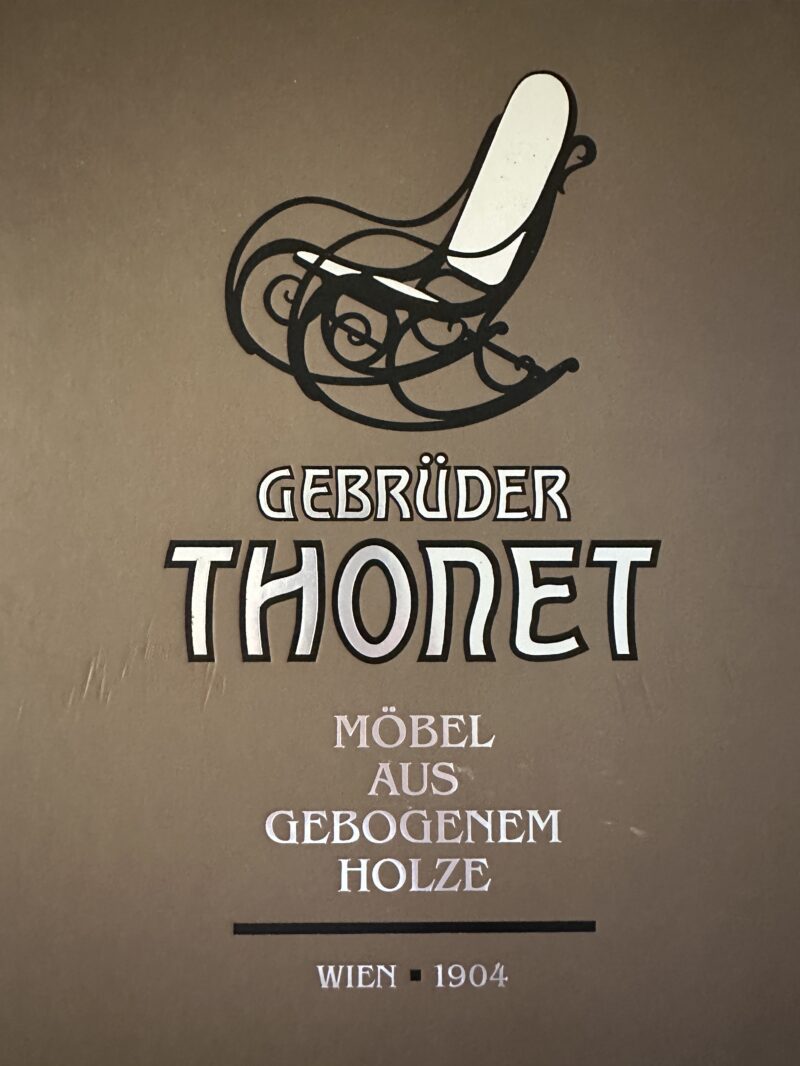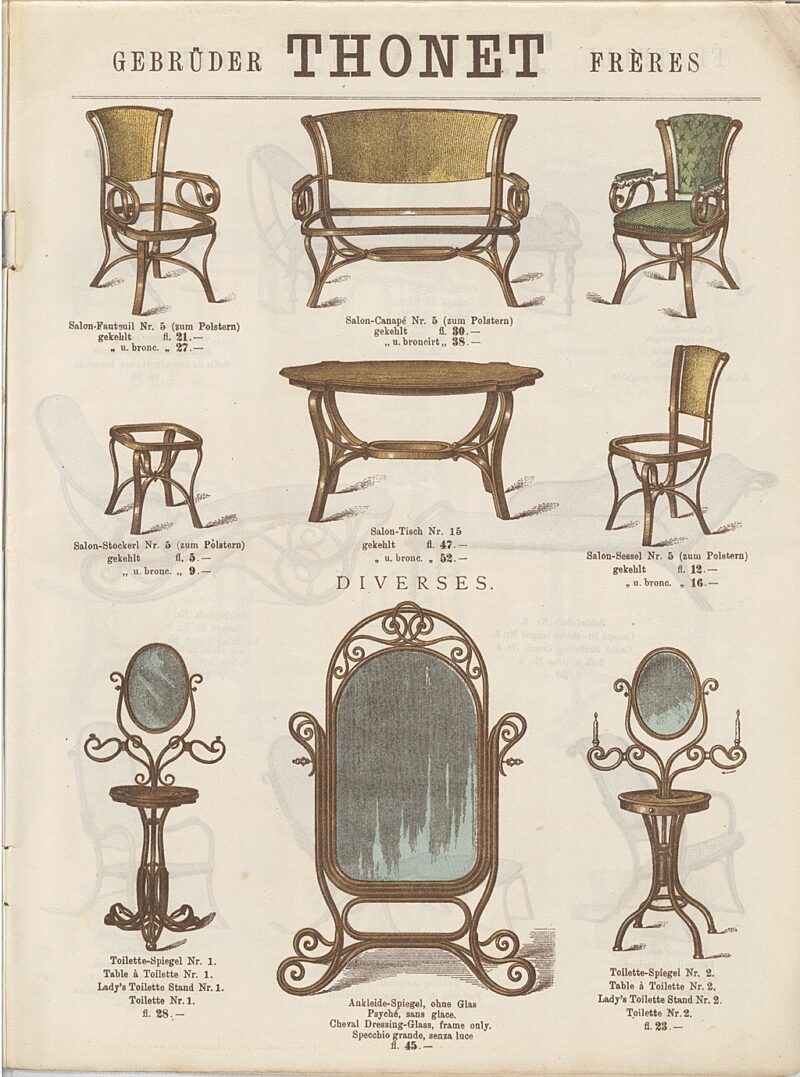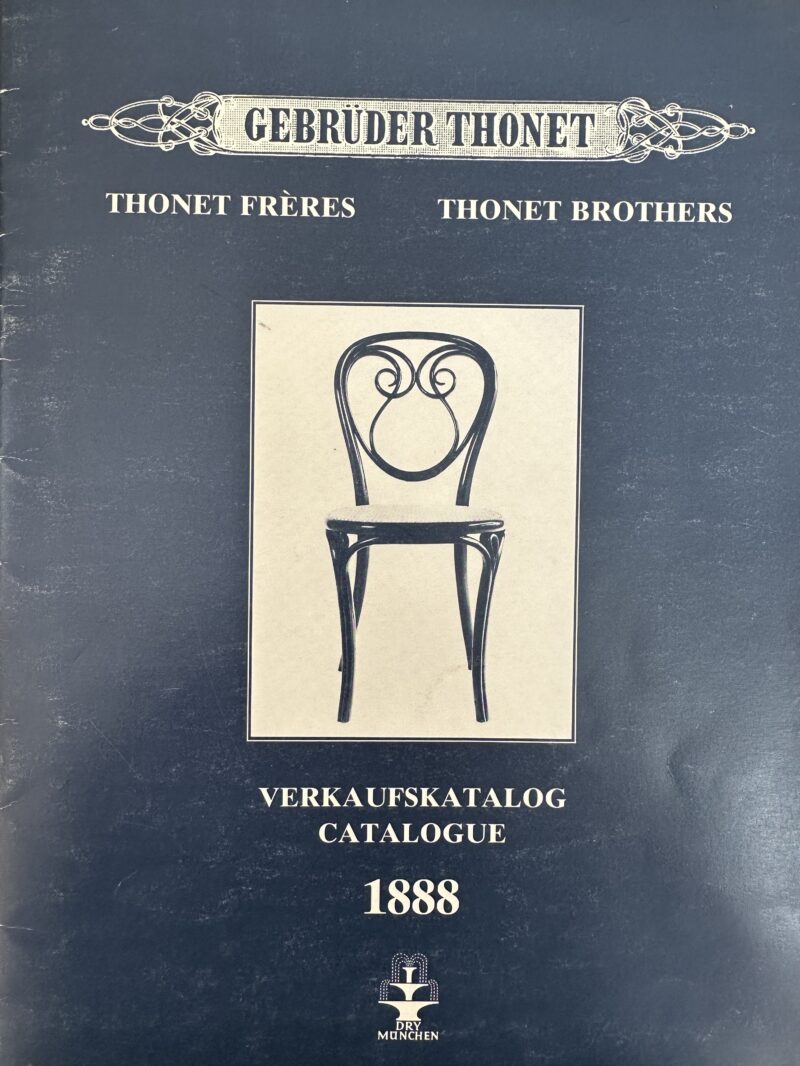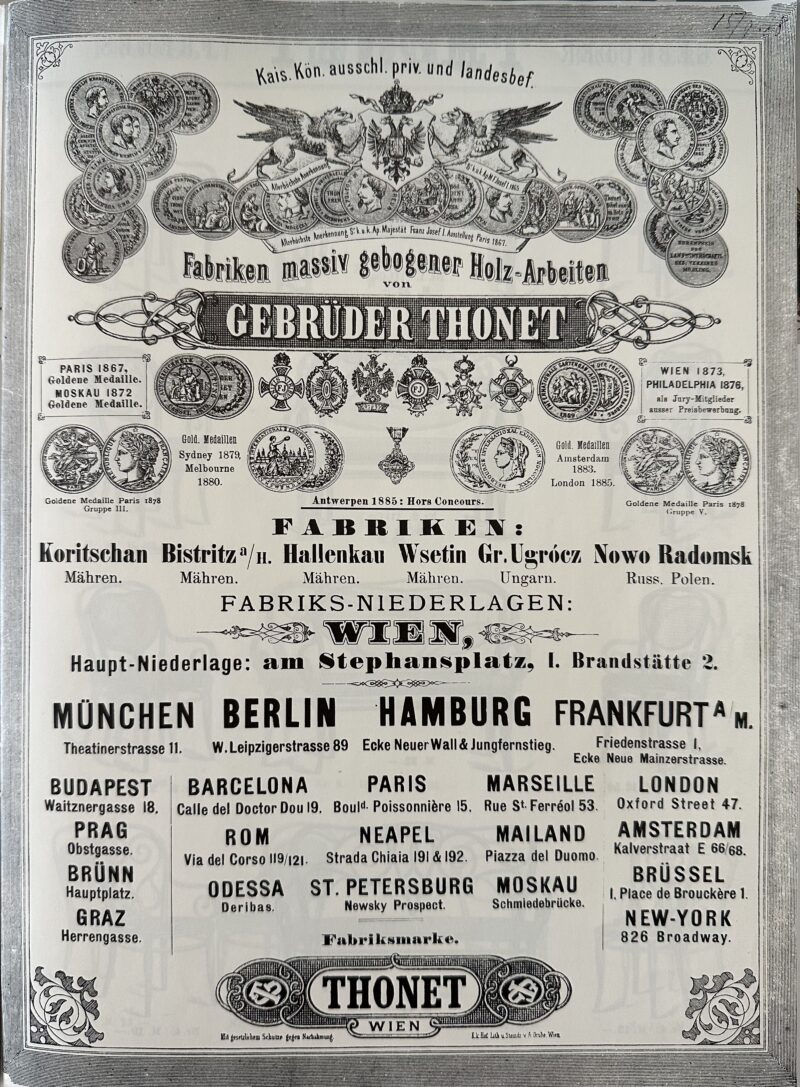
Early and Rare Thonet Salon Bench
Rare early Thonet salon sofa still in the “Liechtenstein construction” without screws, with rigid glued construction and curved elements. The curves and counter-curves of the structure made of bent wood are chamfered and bronzed, which was the most expensive execution variant.
The seat, backrest, and armrests are hand-upholstered, executed, and ready to be covered with a decorative fabric of your choice. The so-called Liechtenstein construction can be traced back to the work that Michael Thonet did in collaboration with Carl Leistler for the Prince of Liechtenstein.
Michael Thonet was a protégé of the Austrian Chancellor and Prince of Metternich, who invited him to Vienna. In Vienna, he was commissioned by the architect Peter Hubert Desvignes to produce furniture for the Palais Lichtenstein. This also prompted Thonet to present his products at various world exhibitions. Since Carl Leistler (carpenter and parquet manufacturer) already had a general contract for furniture and floors, Thonet worked for Leistler as a subcontractor on this project. Beautiful and elaborate parquet floors as well as seating furniture in the style of the “Second Rococo” were manufactured for the Liechtenstein Palace. Some precursor models of the Model Series No. 5 were already on display at the London World Exhibition in 1851, to which Michael Thonet traveled in 1850 for preparation. In London, Thonet presented an ensemble consisting of a chair, sofa, and armchair for the first time. In the list of exhibitors, Thonet is mentioned with six different chair models, two armchairs, a sofa, two tables, a sewing table, two reading tables, and two étagères. From the exhibited set, he developed the later series models No. 9 and No. 5. Both execution variants were available alongside each other until the mid-1870s.
The first known sales catalog was published in 1883, featuring a total of 21 pages and 219 models. A second catalog by the Thonet brothers was published in 1886, and a third in 1888, which already offered 339 different models on 30 pages. The present sofa can be found in the Thonet catalogs of the years 1886, 1888, and 1904, among others. See photos in the following variants:
*As a frame for upholstery; *Chamfered; *Chamfered and bronzed (like the present sofa).
The design of this early salon sofa can certainly be understood as a synthesis of functionality, comfort, aesthetics, and form. Particularly impressive is the incredible linearity in which the curved wood is shaped into curves and counter-curves. It is a masterpiece of early craftsmanship in wood bending, manufactured by one of the most significant factories of that time.

